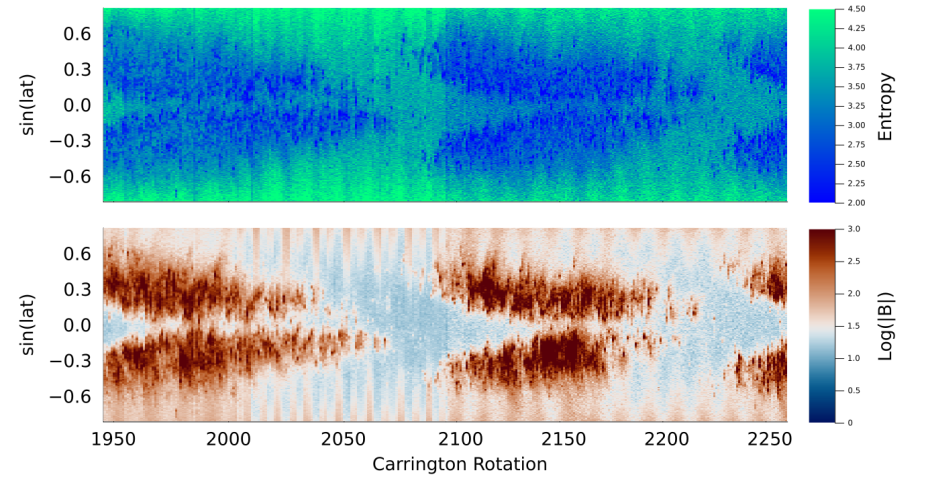Evidence for Rossby waves
The Astrophysical Journal: Much of the research on the magnetic activity of the Sun has been focused on its asymmetric component, however the longitudinal complexity plays a fundamental role in the solar magnetic activity. Rossby waves have recently been proposed as a fundamental mechanism regarding the non-asymmetric of the solar magnetic fields. Here, we use HMI and MDI magnetic field synoptic maps to evaluate the magnetic field structures (mainly active regions) organization and propagation as a function of time and latitude. We first demonstrate using information theory that the organization of longitudinal structures observed on synopitc maps is proportional to the level of activity at a given latitude. We further show that this organization on the longitudinal structures is persisent and due to long-lived features. The drift velocity of these long lived photospheric features is inferred, and is shown to significantly vary with latitude and is compatible with the phase speed of tachocline magnetic-Rossby waves with a toroidal field in the range of 5-10 kG. Our results suggest that Rossby waves contribute to the organization and propagation of photospheric magnetic features on the timescale of several months and beyond.

Comparison of the butterfly diagram based on the Shannon Entropy (top) and the butterfly diagram based on the Magnetic Field Strength (bottom), showing the evolution of level of longitudinal organization of the photospheric magnetic fields as a function of latitude and time.